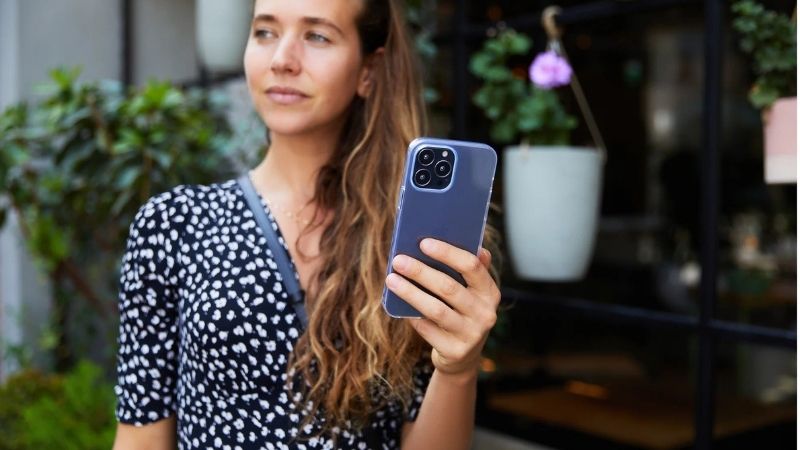The Perfect Posting Ratio For Social Media

The never-ending ordeal of the social media manager... You get your morning coffee, turn on your computer, and that empty content calendar stares at you, and you stare at it. There's only one question on your mind: "What am I going to post today?" In that deep void created by this question, many marketers start searching for a kind of magic formula, a holy grail. That mythical thing that everyone is after: The Perfect Posting Ratio For Social Media. Frankly, if you immediately think of percentages, strict rules, and complicated tables when you hear this title, you're not alone. But wait a second. Should I let you in on a secret from the start? compass.
The Famous 80/20 on Everyone’s Tongue: Sacred Rule or Urban Legend?

This ratio resonates in agencies, marketing departments, and even in intern briefings: 80/20. In other words, they say, 80% of your posts should add something to the audience, entertain, and inform; and the remaining 20% should be sold by selling your product. Great in theory, right? No one wants to follow a brand that constantly throws ads in your face. This approach will transform your brand from that repulsive friend who is “always trying to sell you something” to a “pleasant, knowledgeable, and helpful” friend. We were talking about this exact subject with a client of ours the other day. A furniture brand. They were constantly, constantly talking about how high-quality and stylish their products were. Interaction? On the floor. "Well, tell us once which movie would be the best to watch on that couch, and the best Sunday breakfast that could be had at that table." The complexion of the event changed in an instant.
But the truth is, this 80/20 rule is nothing on its own. It's literally an empty shell. The real issue is what you fill that 80 percent with. If you share cliché information that everyone knows and appears on the first page of Google under the name of "adding value", that 80 percent will be just as boring as your 20 percent sales content. Creating value starts with listening to your audience. What's their problem? What keeps them up at night? What are they most curious about regarding your product or service? Maybe the most "valuable" content for your target audience is a funny behind-the-scenes video. Maybe it's a sincere confession your CEO made about something. Sincerity is often the greatest value. So don't blindly focus on numbers. Try to understand the spirit of that 80%. Touch people, make them laugh, make them think... Then see how that 20% sales content hits the bullseye.
There is also this: sometimes the lines intersect. For example, a video that tells the story of a success a customer achieved using your product... Is this now 80% value content or 20% promotion? I think both. And that's the best part. Growing your brand by telling a story without making it seem like you're selling. This is where the real mastery of the 80/20 rule lies: following the intention, not the numbers.
The Art of Saying "Me, Me, Me" All the Time (and Why It Doesn't Work)

Do you ever remember that person you met at a party who only talked about themselves, their successes, and their amazing life all night long? How tiring and off-putting, right? Brands that constantly share their own products, campaigns, and news on social media are exactly like that person. After a while, people say "enough!" and mute or unfollow. That's why the most important question you should ask yourself when determining your content ratio is: "Am I a good guest at this party, or am I that boring guy everyone avoids?" What does a good guest do? They don't just talk, they listen. They are interested in what others are saying, ask them questions, and sometimes even cheer up the place by telling other people's funny stories.
The equivalent of this on social media is "content curation" and "interaction." That is, not only sharing your own blog posts, but also an inspiring article written by another expert in your industry. It is presenting news or an infographic that you think will be useful to your followers. When you do this, you convey the message that "I'm not just trying to sell my own stuff, I really care about your development and your knowledge." This transforms you from a salesman to a trusted source. For example, if you are a digital marketing agency, you can analyze and share not only your own success stories, but also a new algorithm update released by Google or an inspiring campaign run by a competitor (yes, your competitor!). This shows your self-confidence and claim to be a leader in the industry.
And the conversation part... Oh, how neglected it is. Don't just share and run. Did someone comment? Reply. But not a cliché "Thank you!", but a real response. Start a conversation. Ask questions. Conduct surveys. Show that you are genuinely interested in people's opinions. Remember, social media is, as the name suggests, "social." It’s not a monologue stage; it’s a platform for dialogue. No matter what your sharing ratio is, if it doesn’t have real, human interaction, that ratio is just empty math.
Test, Fail, Test Again: A Guide to Finding Your Golden Ratio

So, we’ve talked about all these rules and ratios. Now we’ve come to the most important question: “What’s the right ratio for my brand?” The answer is simple and a little frustrating: I don’t know. And be suspicious of anyone who claims to know. Because your perfect ratio is directly related to your target audience, your brand identity, your industry, and even your current goals. What works for a B2B software company can be disastrous for a new vegan café. One week you’re launching, and you need to promote 50%. The next week is calmer, and you focus on 90% value and fun. This is not static, it’s dynamic.
So the best thing to do is to act like a scientist. Make hypotheses and test them. Say, “This week I’m going to try the 4-1-1 rule. That means 4 external pieces of content, 1 of my own content, and 1 of sales content. Let’s see what happens.” The following week, say, “This week I’m going all storytelling, hiding products in stories.” And most importantly: Measure! Which types of posts got the most engagement? Which ones drove more traffic to the website? Which ones got the most saves? Analytics tools are your best friend. They will tell you honestly what’s working and what’s not.
And one last piece of advice: Don’t be afraid to be wrong. God forbid, don’t be afraid. It’s not the end of the world if your content gets much less engagement than you expected. It’s a given. You say, “So our audience isn’t really interested in this type of content,” and you move on. Social media is a living organism that is constantly learning and adapting. Instead of being paralyzed by trying to find the perfect ratio, enjoy experimenting, testing, and chatting with your audience. You will see that the "perfect" ratio will start to happen on its own once you stop looking for it.